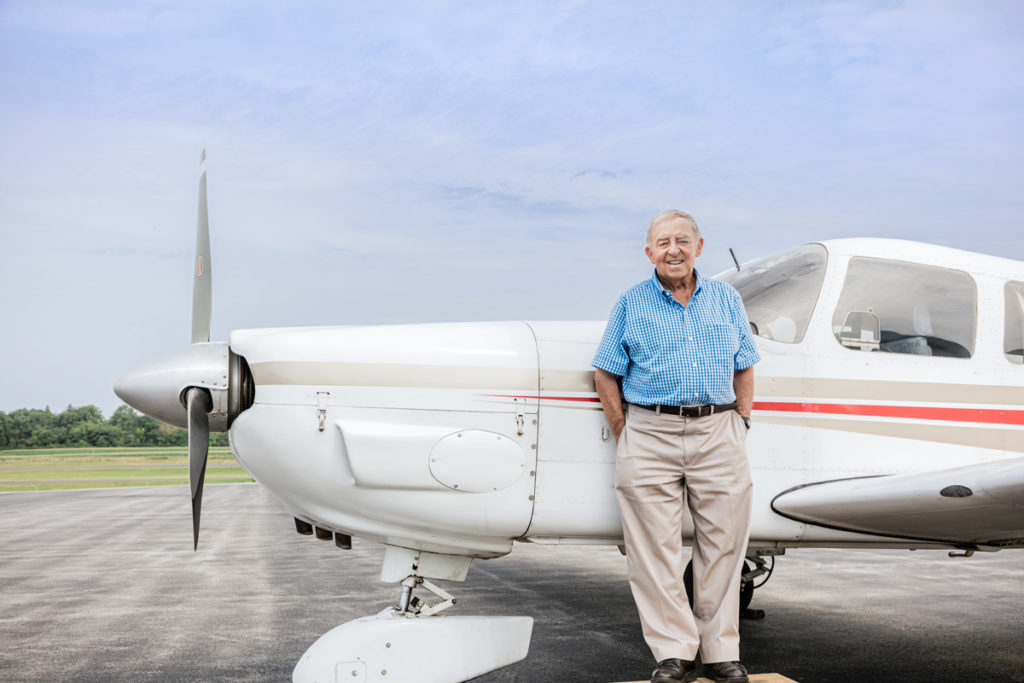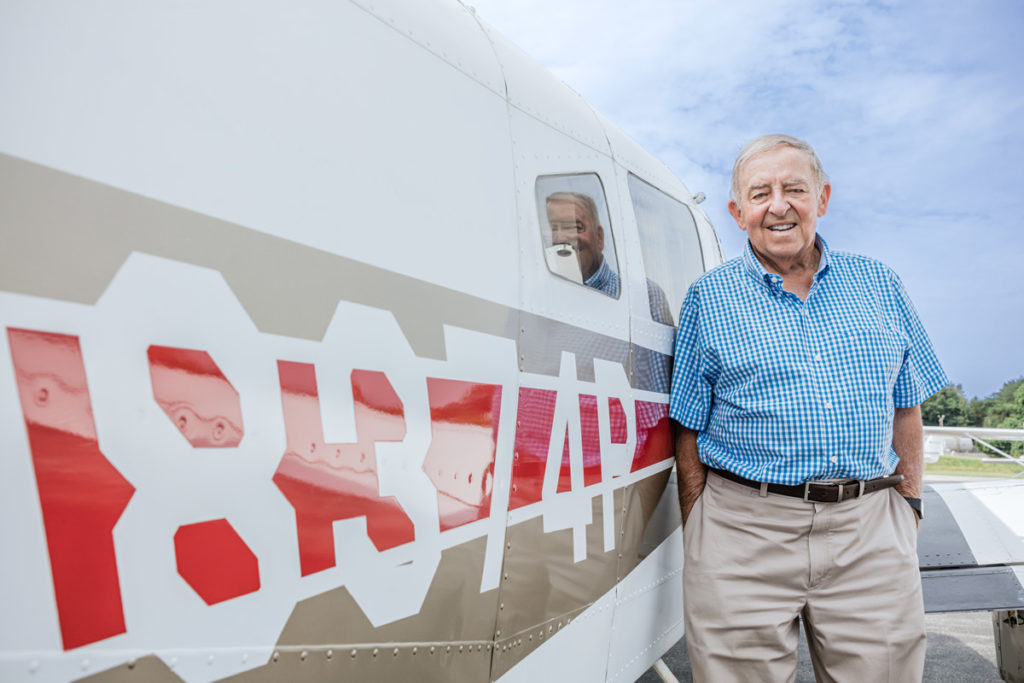The Freedom of Taking Flight
Now a resident of The Hill at Whitemarsh, Dr. George Green graduated from the University of Pennsylvania School of Medicine in 1962 and, after completing his residency at the Mayo Clinic in Minnesota, returned to Penn for a fellowship in allergy and immunology. He continued on the faculty in the department of medicine at the Hospital of the University of Pennsylvania. Not long afterwards, he also joined an internal medicine practice in Abington, Pa. He built a nice life with his wife Trudy and four children in the suburbs, with everything following the status quo until his retirement in 2019.
Except for one thing: George is also an instrument-rated private pilot. In the early 1970s, George and one of his partners in the medical practice decided that they wanted to learn how to fly. They took lessons at the Northeast Philadelphia Airport and eventually bought a plane together. Through his love of flying, George discovered a world of professional and personal opportunities that added more joy to his already full life.
“I always had a fascination with flying,” says George. “My Dad was in the Army Air Corps during the first World War, and my brothers both wanted to fly during World War II, but they were color blind and joined General Patton’s Third Army in the battle for Europe. I wasn’t old enough to sign up, but if I had, I would have wanted to join the Air Force.”
Taking the Family to New Heights
For George, the biggest benefit of having his own plane was being able to avoid flying commercial with his wife and children. The Green family took full advantage of their plane and took vacations to go skiing out West, swim in the Florida Keys and to find adventure in Alaska. For many years after the Greens became empty nesters, George and his wife took the plane to Gallup, New Mexico, where George served as a volunteer internist at the Tohatchi Health Care Center on the nearby Navajo reservation, and Mrs. Green volunteered her time in town at a soup kitchen run by the Sisters of Charity.
“Flying really gave us access to the world beyond Philadelphia,” says George. “We had a plane that could seat six people, which was perfect for our family, and sometimes we would even ask Grandma to come with us.”
When asked if they ever faced any scary situations while the plane was in-flight, George’s response was: “You move through weather systems really quickly up there, and you’re always on guard, but I always landed us safely!”
Their love of family travel had a big impact on the Green children. “I think being able to fly in such an intimate capacity and travel so much together as a family instilled in all of us a sense of adventure,” says George.
Soaring Career Opportunities
Oddly enough, because of his unique mix of medical expertise and being a licensed pilot, George was able to expand his career opportunities beyond his Abington practice. He spent 45 years as a senior aviation medical examiner, providing physicals to pilots who needed to renew their licenses. He would check basic vitals, such as their vision, hearing, heart and blood pressure, and address any special concerns the pilots might have.
“Airline pilots can now fly until age 65, so there are a variety of age-related issues that can pop up and prevent them from continuing to fly if they’re not addressed,” says George. “Since I was also a pilot, I understood what they were going through, so in addition to recommending a course of treatment, I also had the ability to fully explore their issues and encourage them to apply for special issuances, which requires extensive testing for pilots with heart concerns or other health issues.”
He also joined the Flying Physicians Association (FPA), serving as President of the Northeast Chapter for several years. The mission of the organization is to promote “aviation safety and education, cross-disciplinary medical education, charitable and public benefit activities that capitalize on [members’] medical and aviation skills, and social activities involving like-minded physician-pilots.”
Through these endeavors, George was able to forge professional and personal relationships that helped shape both his career and his life.
Still up in the Air
Although George is now 84 years old and retired from his medical practice, he’s still flying and actively involved with flying organizations.
For about 20 years, George has been involved with Angel Flight, which is a nonprofit organization that provides free air transportation for charitable and medical-related needs. Made up of a network of pilots who volunteer their time and their planes in order to transport those who are in dire financial straits, Angel Flight has helped people travel for surgery, chemotherapy treatments, dialysis and more.
“The organization is wonderful, and has networks of pilots all over the country,” says George. “I’m involved with Angel Flight East, which operates out of Wings Field in Blue Bell—not far from The Hill—and provides people in need with free flights to receive medical care throughout the Northeast.”
Wings Field was established in 1930 and became the home of the Philadelphia Aviation Country Club in 1931. The Club, which was originally situated in an old farmhouse on the property, was renovated in 1976 along with upgrades like an all-weather tennis court and a swimming pool. The Club also happens to be the place where the Aircraft Owners and Pilots Association (AOPA) was founded, which, according to its website, has gone on to become one of the most influential aviation associations in the world.
Additionally, flyADVANCED aircraft management and flight training also resides on Wings Field, providing local pilots and travelers with the highest levels of maintenance, service, training and charter flights.
George has also joined United Flying Octogenarians (UFO), which is an international organization comprised of pilots who have flown over the age of 80.
“It’s pretty incredible because membership is at about 2,500-3,000 people now,” George says. “The meetings are all pretty well attended, and many members are veterans, some from World War II, who have very interesting stories to tell.”
One can only imagine what some of those stories entail, but it goes without saying that they all include an element of adventure.

